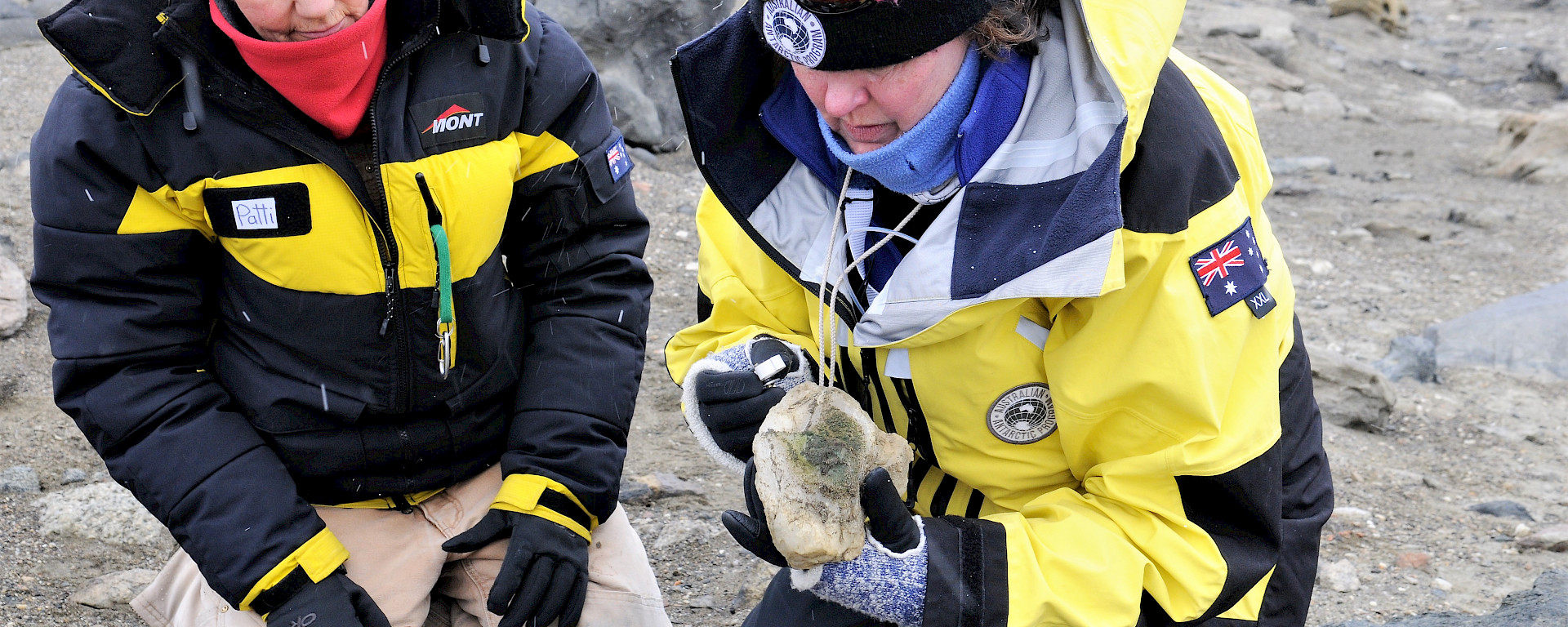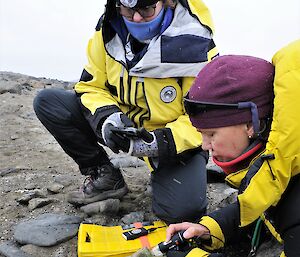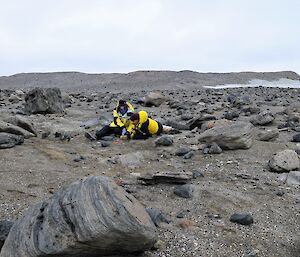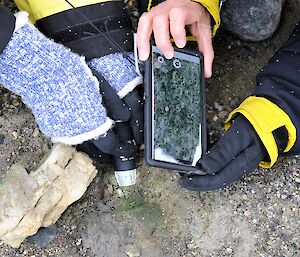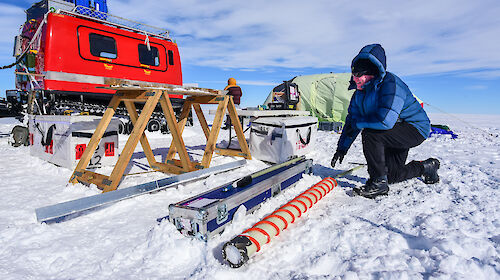Ecologists are searching for cryptic plant life near Davis research station as part of the environmental assessment of a proposal for an aerodrome with a paved runway.
Plant life in Antarctica occurs on almost any exposed or ice-free rock, comprising 0.4 percent of the continent.
A survey of terrestrial vegetation in 400 square kilometres of the ice-free Vestfold Hills, such as mosses and algae, is being undertaken by Australian Antarctic Division ecologists Dr Dana Bergstrom and Dr Patti Virtue.
“Our survey is focussing on sampling sites across a range of habitats identified by modelling environmental characteristics such as elevation, slope, water availability and sunlight,” Dr Bergstrom said.
With 2000 potential sites on their survey map, the team is using an app and mobile devices for digital data collection to help record what they find.
“We’ll broadly describe the presence or absence of vegetation, and its abundance, at each of our modelled locations, and any life we see as we move between these locations. We’ll also take samples for species identification,” said Dr Bergstrom.
Parts of the Vestfold Hills were inundated by seawater during the Holocene period as sea levels changed since the last ice age.
“As we move closer to the Antarctic ice sheet, there’ll be areas that won’t have been exposed to salt in the last 6000 years, and that’s where we’ll start to find the lichens and the mosses.”
“Antarctica is the end of the planetary spectrum for life. In a very saline desert area, we’re still finding life. And that’s what really excites me.”
“If you get down on your hands and knees, you’ll find microscopic plants growing under and within rocks, especially quartz, which acts like a mini-greenhouse.”
One of the key questions the team will be asking is whether the vegetation-friendly habitats within the operational area of the proposed Davis aerodrome also occur outside it.
Building on previous surveys, the work will enable identification of useful sites for future vegetation monitoring, to tease out the impacts of climate change from that of infrastructure construction and operation, should the proposed aerodrome go ahead.
“We’re part of a long history. The Vestfold Hills were discovered in 1935. Australia’s been here since the 1950s. Particularly in the 70s and 80s, there were extensive studies of life here,” Dr Bergstrom said.
“And so we’re the next major data point along from that.”
The Davis aerodrome project is required to undergo environmental assessments under the Antarctic Treaty (Environment Protection) Act 1980 (ATEP Act) and the Environment Protection and Biodiversity Conservation Act 1999(EPBC Act). Public comment is currently open until 26 February 2020 and can be made via the Regulator’s website.

